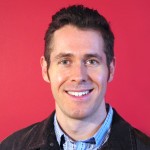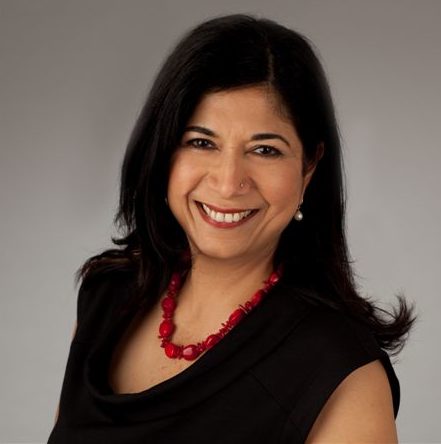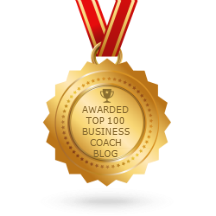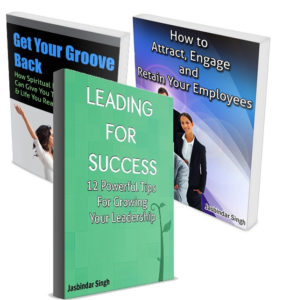 Dario Nardi, PhD is also the founder and CEO of Radiance House media and books. He is also a founder of UCLA’s Human Complex Systems degree program, winner of UCLA’s annual Distinguished Teaching award, and author/coauthor of numerous books including Neuroscience of Personality and “8 Keys to Self-Leadership”. You can find more at www.radiancehouse.com and www.darionardi.com. Dario will be presenting at the Type conference in Sydney in October, 2017.
Dario Nardi, PhD is also the founder and CEO of Radiance House media and books. He is also a founder of UCLA’s Human Complex Systems degree program, winner of UCLA’s annual Distinguished Teaching award, and author/coauthor of numerous books including Neuroscience of Personality and “8 Keys to Self-Leadership”. You can find more at www.radiancehouse.com and www.darionardi.com. Dario will be presenting at the Type conference in Sydney in October, 2017.
- Your work seems to have evolved since your last interview in 2012. Tell us more about this?
- many more people (~300 subjects)
- more biosensors (21)
- new analytical techniques (in particular, looking at brain wiring, which reflects long-term habits, rather than raw amount of brain activity)
- some international comparison (USA, UK, and India)
- very consistent protocol (still diverse activities, just more consistent)
- What captured your interest about Jung’s writing on Kundalini?
Jung’s descriptions of various states of consciousness really impressed me. For example, the language he uses regarding the crown chakra is so spot-on, I suspect he had a personal experience of that space rather than just repeating from elsewhere. It’s the kind of stuff that’s hard to know unless you’ve been in it.
He also offered some splendid advice. For example, Jung states quite clearly in his talks that by engaging in development, one begins an impersonal process. Archetypes are impersonal, for example. A person who makes it personal will in fact end up with “ego inflation” and can end up in serious danger. I found this advice very helpful.
Jung placed his own work (archetypes, etc.) and the contemporary Western world in general within a bigger picture, a spiritual one as well as a practical one.
Jung offers a very different approach than the Western ego development models now in vogue. Jung and Eastern traditions are more psychological / kinesthetic rather than the Western behavioral / linguistic models. They focus more on removing and awakening (toward a universal that’s already there) through body-mind practices like yoga. That contrasts with adding or refining to build up a self (according to a template) or resigning oneself to manage problems.
The metaphor: In the East, you help a flower bud blossom by shedding what keeps it closed tight, and you do this through holistic practices. In contrast, in the West, we analyze, design, and coach skills for a more-better flower, and these are mostly mental. Even “mindfulness” is a Western way of “mentalizing” body-mind practices. Of course these two cultural approaches complement each other.
- What is the relationship between mid-life and the fifth function?
The so-called fifth function is the “Transcendent” function. It’s not like the four well-known Jungian psychological functions—Sensing, iNtuiting, Thinking, and Feeling. It is the one function we build ourselves from our unique life material. People tend to engage this function more in the second half of life, after they’ve sufficiently adapted to society. Then they maybe can begin work here.
In the brain, especially in the mid-30s through the 50s, there can be a fair amount of divergence between where the brain puts energy and what we have already developed. So you are an expert in “X” skill but no longer feel motivated to use it. It’s a neurological phenomenon. I can see plainly how much “mid life” a person has going on (regardless of age) just by looking at his or her brain imaging results. This happens so often with people.
What to do with this divergence? We can tap the fifth function. There are a lot of suggestions for what people can do. These suggestions are drawn from neuroscience, kundalini yoga, Jung, and so forth.
By the way, the fifth function comes in two flavors: “little t” and “Big T”. Most people only experience “little t”, which means “transition”. But there are practices, from kundalini yoga to holotropic breathwork to ayahuasca—almost all from outside the Western world—that enable Big T, which means “transform”. Needless to say, I’m a fan of Big T. But readiness and comfort vary individually.
- Since you started exploring the fifth function, what has been some unexpected insights and how has this affected your own personal transformation?
I’ll speak for myself, though I think these apply generally. I’ve really had to create empty space—safe, unhurried, inviting empty space—for the archetypes to emerge, and then get familiar with them and engage them. Most people rarely have the opportunity to do this. Jung’s “Red Book” etc. describe his experience doing this and his practices like active imagination. And there are Eastern and indigenous American tools that truly create opportunities.
There are several kinds of encounters:
- opposite sex (anima and animus)
- opposite psychological functions (for me, NTJ vs. SFP)
- integration of body-heart-mind-spirit vs. lopsidedness (e.g. like most NT types, I’ve been very head focused)
- ego vs. non-ego, and all the gray areas along the ego’s boundaries
- public vs. private self
- actual vs. potential self
- maya samadhi (that is, “world as fictional stage play” vs. the ultimate divine consciousness)
Jung focused on the tension of opposites. Energetic tension is the grist to create our Transcendent function. Just recognizing these polarities is great. Managing them is helpful. The magic is in resolving the encounters.
Perhaps it is my bias as a dominant Ni type, but there seem to be only two meaningful tasks in life:
— spiritual growth
— one’s “karmic obligations” (family, using one’s gifts for others via career, etc.)
They’re akin to “love God and love others”. That is what I’ve learned. Everything else is a distraction. Being able to notice and step away from the vortexes of particular modes of interacting, by me and others, is an ongoing lesson.
- How can MBTI practitioners embrace more of the fifth function in their in their own developmental journey and work?
I give a dozen suggestions in my talks.
One suggestion is waiting a little bit before addressing a situation. Every network in the brain has a speed. For each of us, some networks are faster or slower than others. A best speed might be 1 or 2 second response speed for our favorite networks. But we have other networks, let’s call them “secondary” ones. They may fire every 5 or 10 seconds. Just giving those secondary networks time to respond, and then actually following up and using them, will strengthen them. And because there are statistical links between the Types and brain organization, we can give targeted advice to people about where to focus. That’s one suggestion.
As a community, we may benefit by acknowledging the huge impact that upbringing and career choice can have on people’s brains. Type is only half the story, so to speak. I think we practitioners know this, it’s just getting that to clients in a useful way that can be a challenge.
For MBTI practitioners, they can do quite a bit for themselves, while for clients the options may be more limited because the practitioner may be limited to the socially expected ways to help people develop.
For folks who are therapists or who do conflict resolution or such, Jung’s insights on projection and introjection are very helpful.
In Jung’s lectures, and from a Hindu perspective, most of what passes for self-help, Human Resources, etc. is stuck in vishudda–the throat chakra. There is lots of talk, and talk about talk. It’s all about expressing and re-representing verbally. This can be useful, and by itself it is very limiting. As Jung said, it is like chasing the wind.
My main suggestion is that every person who is serious about a developmental journey can find a mind-body practice with willingness to step-outside his or her safe zone into other states of consciousness.
- What is your purpose in writing your new book, “Jung and Yoga?”
One purpose is to make sense of Jung, who is not easy to understand. I wanted to throw his book across the room. “Jung on Yoga” is my take on what Jung said. And pardon me for saying so, but I’m pretty good at packaging complex topics in easier language.
Also, Jung confused or left out a few things. For example, he talked about six chakras and he didn’t mention what is typically the heart chakra. His take on the third-eye chakra is also very much his own view, and I wanted to bring out more the traditional kundalini understanding of it.
The chakras are not meant to be an abstract model of consciousness. The chakras constitute a therapeutic framework, based on many people’s physiological experiences that come out of mind-body practices. I’m definitely not a Jungian scholar. Nor am I a kundalini yoga teacher. But I do practice and am now, in the last couple years, familiar with the states of consciousness Jung mentions.
Also, a lot of kundalini yoga seems to activate the vagal nerve system in the body. This is the part of your nervous system that runs from the brain down through all of the organs of the body. So I bring in some neuroscience to the book including my own research of individuals in deep meditation and other altered states.
Finally, knowing Type, I offer some suggestions for people of various types, whereas Jung kept them pretty separate and didn’t offer much of any links.
- What would you say to the naysayers who might see matters of consciousness as, “woo woo.”
In the last few years, consciousness has become more of an accepted topic to explore in science circles. So long as we don’t get lost in “woo woo” land, it is becoming respectable. Brain imaging has certainly helped make this possible.
A big challenge is that most researchers are familiar with a narrow range of conscious states: alert wakefulness, sleep, dreaming, drunkenness and similar semi-debilitated states, and psychosis. They might possibly include a deep meditative state. Scholarship and discussions can get stuck researching and talking within this narrow range, when it’s much wider. In fact, they get stuck in talking, which is itself a cultural bias and pretty limiting.
- Any other comments?
I look forward to sharing about the Transcendent function, midlife, the brain, and mindfulness and similar techniques in October. If all goes well, I’m looking into offering an hour of mind-body exercises during the pre-conference workshop in addition to the usual stuff like brain scans (ha!) I suspect Sydney has a kundalini yoga instructor or two to help out! A sample session isn’t enough to convey the scope of practice, but it’s a start.
Click here to get a copy of Dario’s recently released book.






 Follow Jasbindar on Twitter
Follow Jasbindar on Twitter



